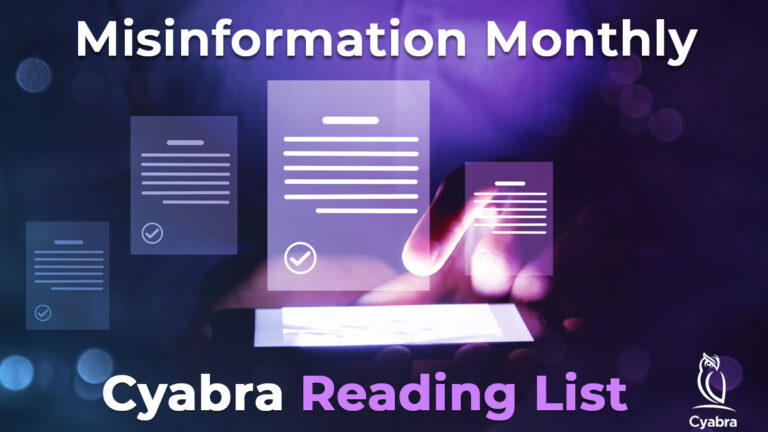In the wake of the devastating wildfires that swept across Los Angeles, a parallel firestorm ignited on social media – this time targeting insurance companies. The biggest outrage was directed at State Farm, the largest property and auto insurer in the US.
While insurance companies are no strangers to public resentment after major crises, State Farm’s online backlash was more than just consumer discontent. The insurance giant became the latest in a long line of corporations swept into a storm of misinformation and conspiracy theories, while its crisis management response was found lacking.
Here’s what Cyabra uncovered:
TL;DR?
- Misinformation and conspiracy theories claiming State Farm had “prior knowledge” of the fires reached 21.8 million views, intensifying the negative discourse
- A single post from actor James Woods gained 2.4 million views, its virality making the comment section a breeding ground for false narratives
- Crisis response missteps: State Farm’s attempt to control the narrative with scripted messages posted by the company’s agents appeared hollow and unconvincing
From Wildfires to Online Firestorm
State Farm was not the sole target of online criticism following the disastrous wildfires in LA. Throughout January, Cyabra’s analysis uncovered an overwhelmingly negative sentiment towards all major insurance companies in the US, with thousands of posts accusing companies of corporate greed and unethical pricing tactics.
However, the backlash against State Farm was much higher than that of its competitors: Negative discourse around the company, both from authentic and fake accounts, reached a vast 1.1 million engagements and over 100 billion potential viewers. The crisis escalated further as customers highlighted the fact that State Farm had canceled 69% of its insurance policies just before the fires, with many sharing personal stories of losing coverage after years of loyalty.
However, this factual claim quickly morphed into a full-fledged conspiracy theory, and misinformation accusing the company of either causing the wildfires or having prior knowledge of the disaster started spreading rapidly, amassing 21.8 million views.
Authentic profiles sharing the conspiracy about State Farm’s “prior knowledge” of the wildfires reached 21.8 million potential views on X and Facebook.
Viral Posts Fanning the Flames
Cyabra’s analysis also revealed that one of the key figures unintentionally amplifying misinformation about State Farm was actor James Woods (@RealJamesWoods). Woods shared his experience with State Farm’s policy cancellation. While his post on X expressed customer frustration and did not endorse the conspiracy, it played a significant role in spreading it. Garnering 2.4 million views, the post quickly became fertile ground for conspiracists to further push the “prior knowledge” narrative.
James Woods’ viral post criticizing State Farm and the conspiracy comments that were quick to follow.
@unusual_whales, a widely followed finance account, posted a similar message that garnered 82,900 interactions and 13.3 million views. Once again, the comments section was overrun with fake news, misinformation, and conspiracy theories, as spreaders latched onto the post’s virality.
@unusual_whales’ post about State Farm’s policy cancellations.
State Farm’s Crisis Mis-management
As the crisis escalated, State Farm attempted to mitigate the fallout by having its agents post identical responses across their social media accounts, aiming to defuse tensions. However, Cyabra’s analysis revealed that this coordinated effort had little impact, gaining almost no exposure and only 52 overall engagements. The repetitive messaging came across as artificial, staged, and poorly executed.
Cyabra’s analysis uncovered the identical response that was posted from different accounts of State Farm agents.
Early Warnings and Smarter Crisis Management
State Farm’s crisis was the result of several converging factors: the wildfires, last-minute policy cancellations, the company’s delayed and haphazard response, and a political climate in which fake news, misinformation, and disinformation – already on the rise in recent years – now spread more easily than ever.
However, this crisis also highlights how quickly false narratives can spiral online, inflicting serious damage on a brand’s reputation, and underscores the critical need to detect them early.
For corporations facing viral crises, it is essential to:
- Proactively monitor discourse, sentiment, and narratives in real time to detect emerging threats before they escalate, and assess their impact.
- Identify key amplifiers driving the conversation – whether customers, influencers, or coordinated fake profiles – and analyze their role in spreading harmful narratives.
- Respond swiftly and strategically with messaging that is authentic, organic, adaptable, and personal
It is also crucial to remember that crisis management and response are no longer just a matter of damage control – it’s all about preparation, agility, and strategy. Only with robust monitoring and analysis tools can companies effectively mitigate crises, make informed decisions, and fully understand the scope of a rising issue or false narrative spreading across the digital landscape.
To learn more, contact Cyabra.


